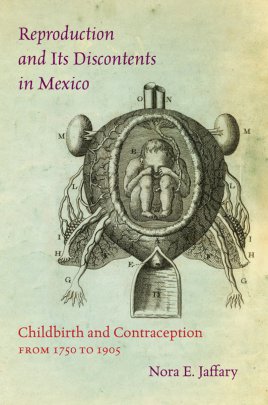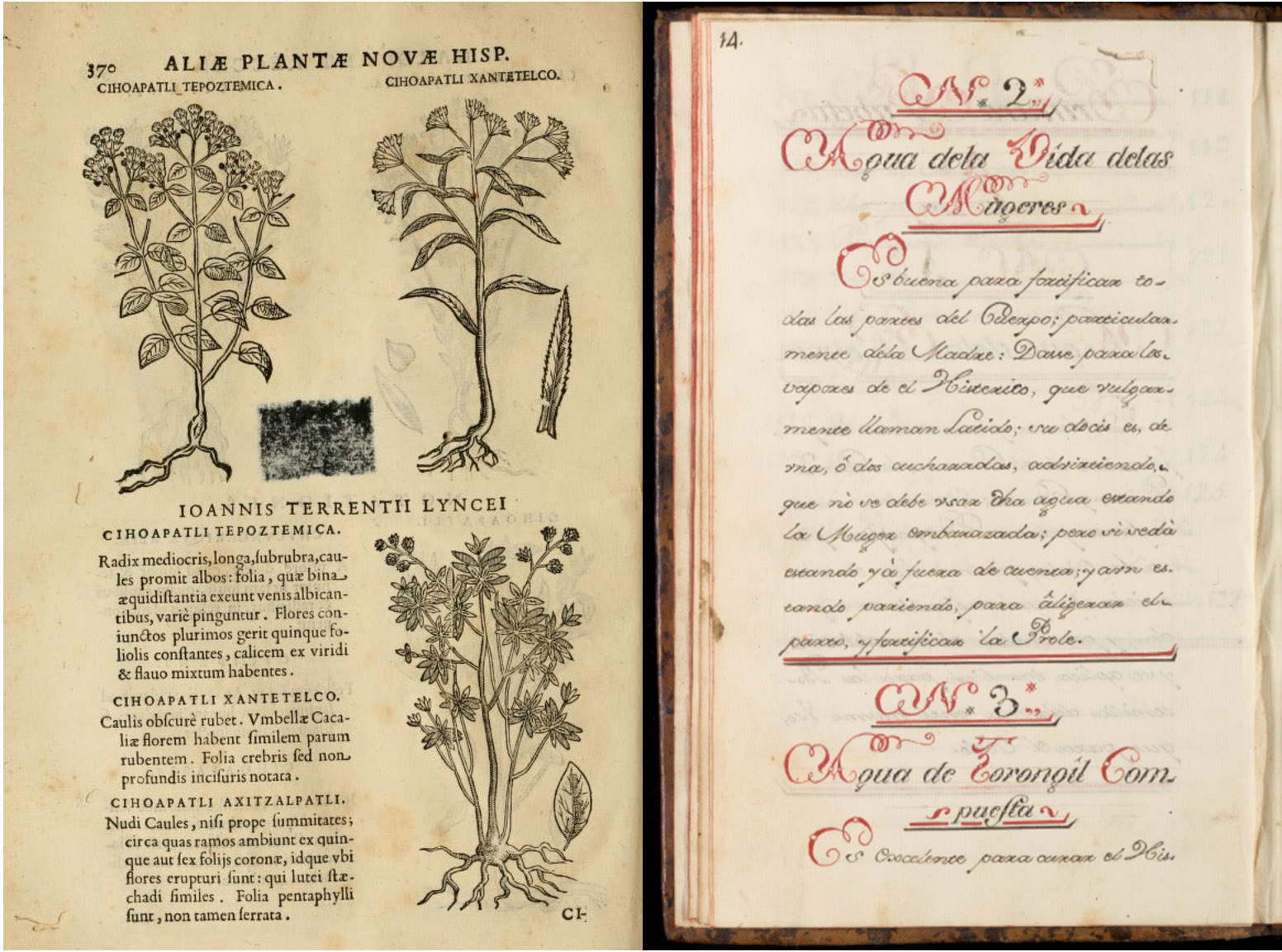In the last three decades of the nineteenth century in Mexico, three times as many neighbors, family members, employers, or administrative officials denounced women for the crimes of infanticide and abortion as had done so in the preceding 220-year period. I unearthed this astounding statistic when mining criminal trials in six different Mexican archives as research for a book published last fall: Reproduction and Its Discontents in Mexico, Childbirth and Contraception from 1750 to 1905. The book covers a variety of issues pertinent to the medical and social history of women and childbirth, including the regulation of midwifery, the phenomenon of “monstrous births,” and the development of modern obstetrical practice, but at its heart lies an analysis of a substantial body of criminal trials about abortion and infanticide during the period of time in which Mexico was transitioning from colony to nation.

My own searching, like that of Sonya Lipsett-Rivera and Zeb Tortorici, uncovered only a handful of abortion and infanticide denunciations in mid- and late-colonial Mexico (11 abortion cases between 1652 and 1793 and 12 infanticide cases between 1699 and 1819). But denunciations for both crimes skyrocketed after 1870 when criminal courts initiated a total of 147 cases for both crimes.
Public scrutiny and legal regulation of poor Mexican women’s practices of abortion and engagement in extra-marital sex dramatically intensified at the close of the nineteenth century. Why? And why was scrutiny so much less intense when Mexico was under Spanish colonial rule, when we might have expected the Catholic church’s codes of morality and reverence for virginity to have been more pronounced than during the secularizing nineteenth century?
Changing attitudes across time, toward both female sexuality and ideas about maternity, are reflected in three infanticide trials spanning the period under investigation. In 1806, a local judge in a small town in the state of Hidalgo initiated an infanticide investigation against María del Carmen Ventura, a poor woman of Spanish descent reputed to be a prostitute, under suspicion that she had procured an abortion or murdered the baby she had publicly been known to be carrying. Ventura’s appointed legal defender mounted a persuasive defense of his charge, pointing out that the case had been opened only due to “the unfounded, capricious suspicion of infanticide” of the judge whose “malicious perversity” had led him to deduce that the only explanation for the death of the newborn would be that she had murdered him. Few reliable statistics exist tracking neonatal and infant death from natural causes before 1850, but we do know that infant mortality was high in the eighteenth century, when one in four infants did not live beyond the first year. Available sources suggest that rates remained consistently high across the later colonial period and through the nineteenth century. The appellate judge who reviewed the case upheld the argument of Ventura’s defender that it was quite likely her infant had died of natural causes and that the prosecuting judge had no grounds for initiating the case; he observed that the mere fact that Ventura was a prostitute did not constitute evidence that she was more likely than any other mother to commit infanticide. Therefore, while, the local judge had expressed his unease about the sexual and reproductive practices of María del Carmen Ventura, his concerns were dismissed by other judicial officials. His suspicions, however, would have greater currency a century later.
A second case that opened forty years later shows some change in attitudes. In a small community in Oaxaca, a 61-year-old manual laborer, Fernando Mendoza, was appointed by the local curate to “keep vigil over” the women in his community. Mendoza repeatedly confronted a young woman, Thomasa Maldonado, about whether she was then (or ever had been) pregnant, and if so, by whom. Mendoza then denounced Maldonado to a justice of the peace under suspicion that she had killed the baby she had been carrying. He informed the town’s chief constable, and eventually convinced a justice of the peace to open a case against her. However in this case as in Ventura’s, an overseeing judge absolved Maldonado. He cited insufficient evidence of the kind that nineteenth-century judges found compelling proof of such crimes: defendant confessions, eye-witness accounts, or physical evidence. Maldonado’s case is unusual in the context of the small number of infanticide cases opened in the first decades of the post-independence period in that in her case (as in Ventura’s), the only evidence that linked her to a crime was her own behavior which a judicial official deemed suspicious. In each of the other 11 infanticide cases found between 1837 and 1859, the public discovery of a newborn corpse prompted criminal investigations.
By the 1880s, however, public gossip and neighborhood scrutiny of women’s criminal or immoral actions more often than judicial suspicions served as the catalyst for opening cases against them. This shifting pattern in denunciations indicates a change in either community members’ perceptions of transgressive female behavior or in their understanding of their obligations to scrutinize such practices. In one 1889 case from Oaxaca, for example, a city resident informed a gendarme that she suspected her neighbor, Micaela Velasco, of killing newborn twins. The court opened a criminal case against Velasco later the same day during which a fourteen-year-old girl, Herlinda Hernández, testified that she had been in her kitchen washing plates when she had heard two acquaintances discussing how a third neighbor, Velasco, had just given birth to twins. Hernández had looked across the way and saw Velasco’s mother emerge from her house with a bundle wrapped in rags, which she threw into a pit; she later watched the woman bury a second bundle on the patio.
Several issues account for the dramatic increase in the numbers of women denounced for infanticide and abortion over time and the shifting community involvement in such denunciations. These cases demonstrate a shift in ideas about the public nature of reproductive practices. Substantial evidence from Inquisition and criminal trials, medical literature, institutional records, and pharmaceutical guides, including the 1785 Prontuario o método fácil en donde se contienen las mas eficaces Medicinas (Handbook of easy methods and effective medicines), suggests that people in late colonial Mexico maintained considerable knowledge about efficacious medicinal abortifacients, particularly the plant cihuapatli (the aster flower) that midwives had employed in the pre-Columbian period, pictured below in Francisco Hernández’s 1651 botanical treatise. In the colonial period, unlike in the nineteenth century, Mexicans considered birth and its regulation a private rather than a public matter. Medical institutions, the press, the state, and families themselves considered childbirth an act beyond public purview. The only acts of birth that were widely publicized were those of the Spanish queen or the Viceroy’s wife. This changed radically in the course of the nineteenth century with the emergence of obstetrical medicine as a centerpiece of Mexican medical modernity. It also changed as the new nation of Mexico began considering childbirth important to the creation of the country’s citizenry in ways that had not been a part of colonial imaginations.

In the nineteenth century, public perceptions of female deviancy changed. Early in the century, when character witnesses appeared before criminal courts to support the innocence of Mexican plaintiffs, they often testified about the moral conduct (the buenas costumbres) of these women. This they defined in terms of women’s good, tax-paying, and Christian families, and in their demonstrations of filial obedience. In the later nineteenth century, witnesses and judges both began identifying moral conduct in terms of both maternal sentimentality and sexual virtue that do not appear in earlier cases. A judge who tried one woman in 1888 in Oaxaca City, for example, condemned the defendant for infanticide. He did so because she was already mother to three children outside of wedlock, demonstrating that she was not a woman of good morals.
While in María del Carmen Ventura’s 1806 case, an appellate judge had opposed the conflation of sexual licentiousness with criminal deviancy, by 1888 the connection had become legal orthodoxy. One foundation for this new orthodoxy lay in the Federal Criminal Code that Mexico promulgated in 1871. This Code privileged the primacy of honor and its demonstration in the public sphere. It explicitly sought public involvement in self-policing for the benefit of the developing nation state. The Code actually reduced the sentences for those convicted of abortion or infanticide, which prior to 1871 was—at least in theory—the death penalty. The 1871 Code instead prescribed prison sentences for either crime. Simultaneously, it also legislated a link between sexual dishonor and criminal guilt. The Code stipulated that women the public knew to be sexually immoral, and those who had not hidden their pregnancies, would serve lengthier sentences if convicted of either infanticide or abortion.
Extant statistical evidence is not sufficiently reliable to tell us if women committed infanticide and procured abortions with greater frequency in the last decades of the nineteenth century. But we do know that in this period their own community peers denounced them for these crimes much more frequently than earlier in the century. What accounts for this apparent increase in denunciations? The circulation of new obstetrical ideas and practices meant that the public newly scrutinized childbirth practices in ways it had not done before. The public adopted new ideas about female virtue that privileged sexuality and maternity. And finally, the codification of crime and punishment articulated in the 1871 Penal Code encouraged neighbors, employers, and family members to denounce their peers in order to ensure the population’s embrace of modernity. In comparison to this atmosphere, the colonial era’s long silence about the crimes of abortion and infanticide looks like a period of relative autonomy—or at least blessed ignorance—about women’s individual reproductive choices.
 Nora E. Jaffary is Associate Professor of History at Concordia University in Montréal. Her most recent book, Reproduction and Its Discontents in Mexico, is a finalist for the Canadian Historical Association’s Wallace Ferguson Prize. Jaffary’s other books include False Mystics: Deviant Orthodoxy in Colonial Mexico (Nebraska, 2004), editor of Gender, Race, and Religion in the Colonization of the Americas (Ashgate, 2007), and editor with Edward W. Osowski and Susie S. Porter of Mexican History: A Primary Source Reader (Westview, 2009). She is currently researching an 1895 exhibition of monstrous births, and enjoys reading and eating her way through Mexico.
Nora E. Jaffary is Associate Professor of History at Concordia University in Montréal. Her most recent book, Reproduction and Its Discontents in Mexico, is a finalist for the Canadian Historical Association’s Wallace Ferguson Prize. Jaffary’s other books include False Mystics: Deviant Orthodoxy in Colonial Mexico (Nebraska, 2004), editor of Gender, Race, and Religion in the Colonization of the Americas (Ashgate, 2007), and editor with Edward W. Osowski and Susie S. Porter of Mexican History: A Primary Source Reader (Westview, 2009). She is currently researching an 1895 exhibition of monstrous births, and enjoys reading and eating her way through Mexico.

NOTCHES: (re)marks on the history of sexuality is licensed under a Creative Commons Attribution-NonCommercial-NoDerivatives 4.0 International License.
Based on a work at www.notchesblog.com.
For permission to publish any NOTCHES post in whole or in part please contact the editors at NotchesBlog@gmail.com




